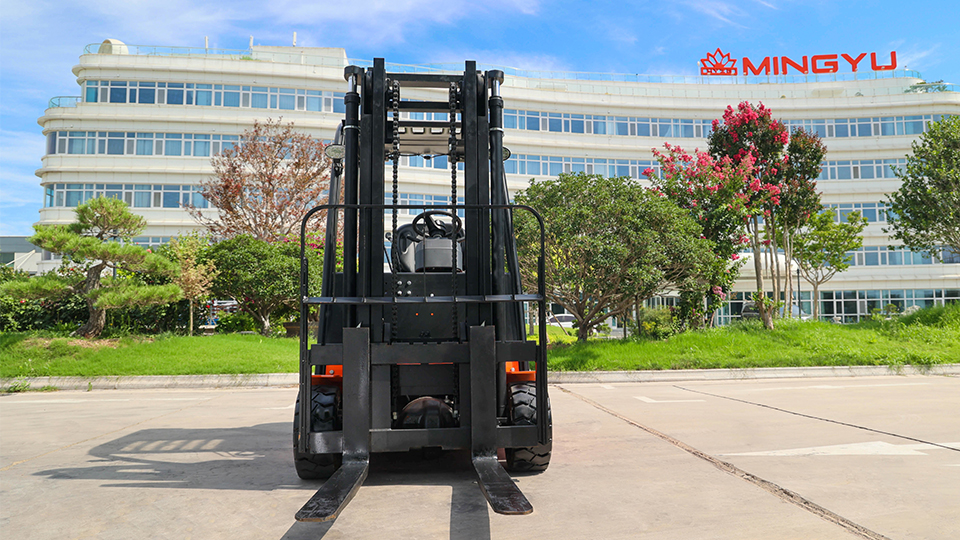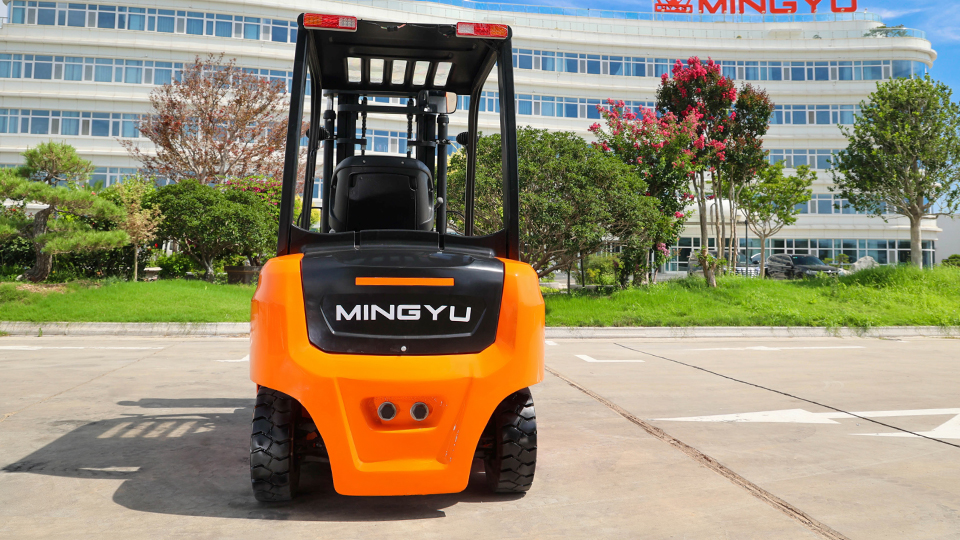
The Lifespan Equation: More Than Just Hours
The question of "how long does an electric forklift last?" is frequently posed by businesses seeking to optimize their material handling investments. Unlike a simple consumer appliance, the lifespan of an electric forklift is a complex interplay of several critical factors, making a single, universally applicable answer challenging to provide. While many manufacturers quote an average operational life of 10,000 to 12,000 operating hours, or roughly 5 to 7 years for a typical single-shift operation, this is merely a guideline. The true longevity can extend well beyond 15,000 hours or even 10 years with diligent maintenance and optimal operating conditions, or conversely, be significantly shortened by neglect and misuse.
This technical article will dissect the primary determinants of an electric forklift's lifespan, moving beyond the simplistic hour meter reading to explore the intricate relationship between battery health, motor and control system durability, mechanical integrity, and the overarching impact of operational environment and maintenance practices. We will also touch upon the evolving landscape of electric forklift technology and its implications for future longevity.
1. The Heart of the Machine: Battery Lifespan
The battery is arguably the most critical component influencing an electric forklift's operational life, and often the first major component requiring significant attention or replacement. The type of battery, its charging regimen, and environmental factors all play a substantial role.
Lead-Acid Batteries: Traditionally, lead-acid batteries have powered electric forklifts. Their lifespan is typically measured in charge cycles, with an average lead-acid battery offering between 1,200 to 1,500 cycles. A "cycle" is generally defined as one full discharge and recharge. For a typical single-shift operation, this translates to about 3 to 5 years of effective life before significant capacity degradation (where the battery can no longer hold sufficient charge to complete a full shift) necessitates replacement or reconditioning.
Factors Affecting Lead-Acid Battery Life:
Depth of Discharge (DoD): Consistently discharging lead-acid batteries beyond 80% of their capacity severely shortens their lifespan. Frequent shallow discharges (20-30%) are preferable.
Charging Practices: Overcharging or undercharging can lead to sulfation (build-up of lead sulfate crystals) or grid corrosion, reducing capacity and lifespan. Proper equalization charges are crucial.
Temperature: High temperatures accelerate electrolyte evaporation and plate degradation. Low temperatures reduce available capacity.
Watering: Improper watering levels (too low or too high) can damage the battery. Distilled water is essential.
Opportunity Charging: While convenient, frequent partial charges can negatively impact lead-acid battery life if not managed properly, leading to "memory effect" in older battery chemistries, though less prevalent in modern industrial lead-acid batteries.

Lithium-Ion Batteries: Rapidly gaining market share, lithium-ion (Li-ion) batteries offer significant advantages in terms of lifespan and performance. They typically boast 2,000 to 3,000 (and often more) charge cycles, translating to 5 to 10 years or even longer in many applications.
Factors Affecting Lithium-Ion Battery Life:
Depth of Discharge (DoD): Unlike lead-acid, Li-ion batteries are less sensitive to deep discharges and can be opportunity charged without adverse effects.
Temperature: While generally more robust, extreme temperatures (both hot and cold) can still impact Li-ion battery health over the long term. Integrated Battery Management Systems (BMS) help mitigate this.
Charging Voltage/Current: Proper charging protocols are managed by the BMS, preventing overcharging and over-discharging.
Advantages of Li-ion for Lifespan:
Consistent Power Output: Li-ion batteries deliver consistent voltage throughout their discharge cycle, maintaining strong performance.
Faster Charging: Shorter charge times mean less downtime.
Maintenance-Free: No watering or equalization charges required, reducing labor and potential for human error.
Longer Warranty Periods: Reflecting their expected longevity, Li-ion batteries often come with longer warranties than lead-acid.
The battery's eventual replacement is a significant cost factor in an electric forklift's total cost of ownership (TCO) and directly impacts its perceived "end of life" if not addressed.
2. The Powerhouse and Control: Motors and Control Systems
Electric forklifts rely on electric motors (traction and hydraulic) and sophisticated control systems (controllers, inverters, sensors) to function. The lifespan of these components is generally robust but can be influenced by operational stress.
Electric Motors (AC vs. DC): Modern electric forklifts predominantly utilize AC (Alternating Current) motors, which are brushless and require less maintenance than older DC (Direct Current) motors.
AC Motors: Known for their durability and efficiency, AC motors have a long lifespan, often exceeding the mechanical life of the forklift itself if not subjected to excessive overloading or extreme thermal cycles. Their brushless design eliminates wear and tear on brushes, a common failure point in DC motors.
DC Motors: While less common in newer models, DC motors require regular brush inspection and replacement. Neglecting this can lead to commutator damage and premature motor failure.
Control Systems (Controllers, Inverters, Sensors): These electronic components manage the forklift's acceleration, braking, lifting, and steering.
Durability: Modern control systems are designed for industrial environments, incorporating robust casings and protection against dust and moisture. However, they are susceptible to:
Voltage Spikes/Fluctuations: Unstable power supplies or improper charging can damage sensitive electronics.
Overheating: Continuous heavy-duty cycles without adequate cooling can degrade electronic components.
Vibration: Excessive vibration over long periods can loosen connections or damage circuit boards.
Environmental Contaminants: Exposure to excessive dust, moisture, or corrosive chemicals can lead to component failure.
While motor and control system failures are less frequent than battery replacements, they can be costly to repair. Regular diagnostics and proper environmental control contribute to their longevity.
3. The Mechanical Foundation: Chassis, Mast, and Hydraulics
The structural and mechanical components of an electric forklift are designed for durability, but their lifespan is directly linked to the intensity of use and the quality of preventive maintenance.
Chassis and Frame: The robust steel frame and chassis are built to withstand significant loads and impacts. Their lifespan is largely dictated by the severity and frequency of accidental damage. Regular inspections for cracks, bends, and corrosion are essential.

Mast Assembly: The mast, responsible for lifting and lowering loads, comprises channels, rollers, chains, and hydraulic cylinders.
Rollers: Worn or damaged mast rollers can lead to excessive friction, noise, and uneven lifting. Regular lubrication and replacement are critical.
Chains: Mast chains stretch over time and require regular tensioning and lubrication. Neglecting this can lead to chain breakage, a dangerous and costly failure.
Hydraulic Cylinders and Hoses: Leaks in hydraulic cylinders or hoses indicate wear and can lead to loss of lifting power and potential safety hazards. Regular inspection for leaks and timely replacement of seals and hoses extend their life.
Drive Axle and Steering System: These components endure constant stress from movement and steering.
Bearings: Wheel bearings and axle bearings wear out over time, especially under heavy loads or in dusty environments. Regular greasing and timely replacement prevent catastrophic failures.
Steering Components: Tie rods, kingpins, and steering cylinders require regular inspection for wear and play.
Tires: While not directly affecting the forklift's core mechanical lifespan, tire wear significantly impacts performance, stability, and operator comfort. Using the correct tire type (cushion, pneumatic, or solid pneumatic) for the application and regular inspection for wear and damage are important.
The cumulative effect of minor mechanical wear, if left unaddressed, can lead to cascading failures and ultimately shorten the forklift's useful life.
4. The Human Element: Operational Environment and Usage Patterns
How and where an electric forklift is used profoundly impacts its longevity.
Operating Hours and Shifts: A forklift operating 24/7 across multiple shifts will accumulate hours and wear much faster than one used for a single shift a few hours a day. Higher operating hours naturally lead to faster wear on all components.
Load Weight and Frequency: Consistently overloading a forklift or handling extremely heavy loads frequently puts immense stress on the mast, hydraulic system, chassis, and drive train.
Travel Distance and Speed: Long travel distances at high speeds increase wear on tires, brakes, and the drive system. Aggressive acceleration and braking also contribute to faster component degradation.
Operator Skill and Training: Well-trained operators handle forklifts smoothly, avoiding sudden impacts, overloading, and improper turns. Poor operating habits, such as "forklift rodeo" or consistently hitting racks, drastically reduce lifespan.
Floor Conditions: Rough, uneven, or debris-strewn floors increase vibration, impact, and wear on tires, suspension, and the chassis. Smooth, clean surfaces are ideal.
Environmental Conditions:
Temperature Extremes: Both excessively hot and cold environments can negatively affect battery performance, hydraulic fluid viscosity, and electronic components.
Dust and Debris: Fine dust can contaminate electrical components, bearings, and hydraulic systems. Regular cleaning is crucial.
Moisture and Corrosives: Operating in damp environments or near corrosive chemicals can accelerate rust and degrade electrical connections. Specialized "wash-down" or corrosion-protected models are available for such applications.
5. The Lifeline: Preventive Maintenance and Servicing
No factor is more critical to maximizing an electric forklift's lifespan than a robust and consistently executed preventive maintenance (PM) program.
Adherence to Manufacturer's Schedule: Manufacturers provide detailed PM schedules based on operating hours or calendar time. Following these schedules ensures timely inspection, lubrication, adjustments, and replacement of wear items.
Regular Inspections: Daily operator checks and periodic thorough inspections by certified technicians can identify minor issues before they escalate into major, costly failures. This includes checking fluid levels, tire pressure, brake function, lights, alarms, and overall structural integrity.
Lubrication: Proper and timely lubrication of moving parts (mast rollers, chains, bearings, pivot points) reduces friction and wear.
Component Replacement: Proactive replacement of wear items (e.g., hydraulic filters, air filters, mast chains, worn tires) at recommended intervals prevents secondary damage to more expensive components.
Software Updates and Diagnostics: Modern electric forklifts often have sophisticated onboard diagnostics and software. Regular updates can improve performance, efficiency, and identify potential issues.
Professional Servicing: Utilizing certified technicians for complex repairs and major services ensures that work is performed correctly, using genuine parts and following manufacturer specifications.
Neglecting preventive maintenance is a guaranteed way to shorten an electric forklift's life and significantly increase its total cost of ownership through premature failures and increased downtime.
The Evolving Landscape and Future Lifespan:
Advancements in electric forklift technology are continuously influencing their potential lifespan:
Lithium-Ion Batteries: As discussed, Li-ion batteries inherently offer longer cycle lives and better performance consistency, extending the operational window before major battery replacement.
Telematics and Predictive Maintenance: Integrated telematics systems collect real-time data on forklift usage, battery health, and component performance. This data enables predictive maintenance, allowing for proactive repairs before failures occur, thereby extending the forklift's overall life.
Enhanced Diagnostics: More sophisticated onboard diagnostic systems make troubleshooting faster and more accurate, reducing downtime and ensuring proper repairs.
Improved Component Design: Manufacturers are continually refining motor, control system, and mechanical component designs for greater durability and efficiency.
These technological advancements suggest that the upper end of an electric forklift's lifespan is likely to increase, provided users leverage these capabilities through data-driven maintenance strategies.
Conclusion: Maximizing Your Investment
While an electric forklift might typically last 10,000 to 12,000 operating hours or 5 to 7 years in a single-shift operation, this is merely a starting point. The true answer to "how long does an electric forklift last?" is contingent on a complex interplay of factors, with battery health, consistent preventive maintenance, responsible operation, and a suitable operating environment being the most influential.
By investing in high-quality equipment, implementing a rigorous preventive maintenance schedule, training operators effectively, and selecting the right battery technology for the application, businesses can significantly extend the operational life of their electric forklifts well beyond average expectations. This not only defers the capital expenditure of new equipment but also reduces overall total cost of ownership, making electric forklifts an even more sustainable and economically viable choice for material handling operations. Ultimately, the longevity of an electric forklift is not a fixed number but rather a direct reflection of the care and attention it receives throughout its working life.
Name: selena
Mobile:+86-13176910558
Tel:+86-0535-2090977
Whatsapp:8613181602336
Email:vip@mingyuforklift.com
Add:Xiaqiu Town, Laizhou, Yantai City, Shandong Province, China